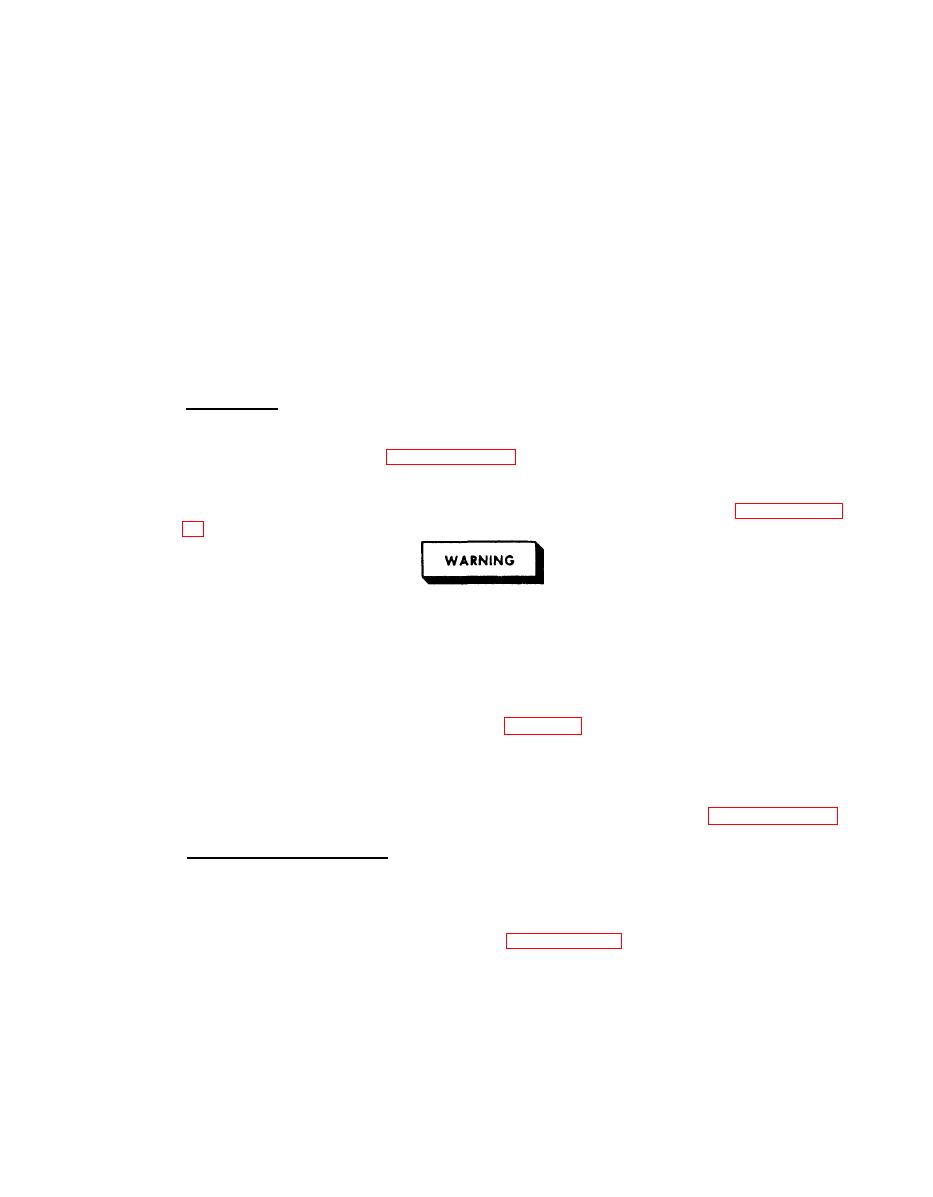 |
|||
|
|
|||
|
|
|||
| ||||||||||
|
|
 TM
32-5865-216-24P
c.
Check for printed wiring traces that are loose, broken, or
otherwise damaged.
Check for loose, burned, or broken connectors.
d.
e.
Check for discolored, burned, or broken wiring.
Check for cracked, discolored, or burned component insulator
f.
pads.
Check for burned, powdered, or broken resistors, diodes,
g.
transistors, and ICs.
Check for leaking, bulging, cracked,burned, or powdered
h.
capacitors or inductors.
Cleaning.
Remove dust and loose dirt from exterior surfaces with a clean,
a.
soft cloth (item 3, Appendix D).
Remove dust and dirt from cable and CCA connectors, internal
b.
wiring and other surfaces with a soft brush (item 2, Appendix
Adequate ventilation should be provided while using
Prolonged breathing of
trichlorotrifluoroethane.
The solvent should not be
vapor should be avoided.
used near heat or open flame; the products of
Since
decomposition are toxic and irritating.
trichlorotrifluoroethane dissolves natural oils,
prolonged contact with skin should be avoided. When
necessary, use gloves (item 7, App. D) that the sol-
If the solvent is taken
vent cannot penetrate.
internally, consult a physician immediately.
Remove grease and/or ground-in dirt with a cloth dampened
C.
(not wet) with trichlorotrifluoroethane (item 19, Appendix D).
REMOVAL PROCEDURES.
Disassembly of the tunable coupler consists of removal of the
top and bottom covers to gain access to interior subassemblies, and
removal of subassemblies. Where removal procedures are obvious, no
Refer to figure 5-6 for the location of
instructions are provided.
the components.
|
|
Privacy Statement - Press Release - Copyright Information. - Contact Us |